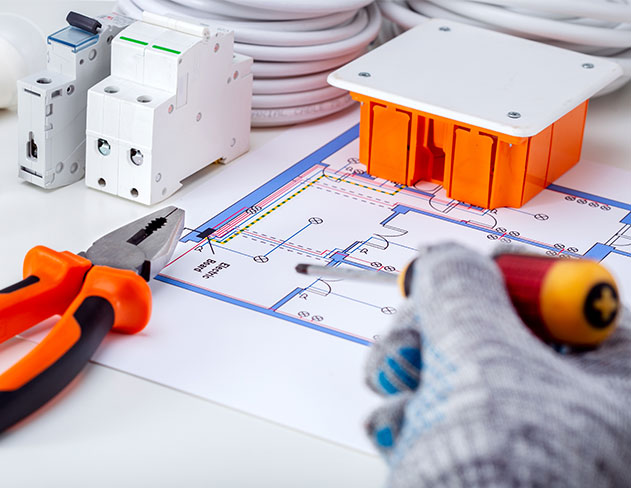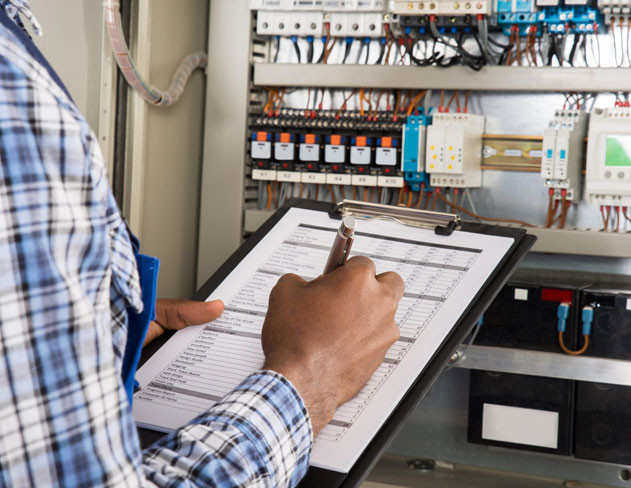Why Should You Use EICR and PAT Testing Together
In today’s world, ensuring electrical safety is not just a regulatory requirement but a moral responsibility. Whether you’re a homeowner, a business owner, or a property manager, you’ve likely heard of EICR and PAT testing. But how do they work together, and why should you care?
You’re here because you understand the importance of electrical safety and want to ensure that every aspect of your property, from fixed installations to portable appliances, meets the highest safety standards.
EICR and PAT testing are two critical components of this safety net. But using them in isolation isn’t enough. The synergy between them can provide a comprehensive safety solution that many overlook.
Keep reading to discover the complementary nature of EICR and PAT testing, gain practical insights into implementing combined testing effectively, understand the cost-effectiveness of an integrated approach, and dive into expert perspectives showcasing the tangible benefits of using both tests together for true electrical safety peace of mind.
Understanding the Basics
EICR (Electrical Installation Condition Report)
An EICR is a detailed inspection and testing process performed on the fixed electrical installations of a property. It aims to identify any deficiencies, damage, deterioration, or dangerous conditions within the electrical wiring system that could cause electric shocks or fires. EICRs evaluate the overall condition of the electrical installation against the national safety standard BS 7671.
EICRs are mandatory across rented properties in the UK and are also highly recommended for commercial buildings and private homes, especially those over 10 years old. They provide formal verification that the electrical system is safe and help ensure compliance with electrical regulations.
PAT (Portable Appliance Testing)
PAT testing involves safety checks performed on portable electrical appliances like kettles, microwaves, vacuum cleaners, laptop chargers, and any device with a plug. It assesses whether the appliance is damaged, improperly wired, or susceptible to electrical faults when in use.
PAT testing aims to detect any appliances that could cause electric shocks, burns, or fires. By identifying and removing unsafe devices, PAT testing reduces electrical risks, especially in workplaces and rented properties where equipment experiences heavy usage.
The Synergy Between EICR and PAT Testing
Complementary Nature
EICR and PAT testing complement each other perfectly to deliver comprehensive electrical safety. EICR focuses on the fixed wiring circuits and electrical distribution boards. In contrast, PAT concentrates on inspecting the condition of portable appliances plugged into these fixed installations.
Used together, they provide full coverage – EICR evaluates the underlying electrical infrastructure while PAT examines the appliances drawing power from it. Think of it as inspecting both the roads and the vehicles driving on them.
Efficiency in Compliance
Dual testing streamlines the compliance process. It is more time and cost-efficient to conduct both tests together rather than independently.
EICR ensures the electrical backbone is safe. PAT then verifies that any devices plugged in are not defective in ways that could overload or damage the fixed wiring system.
Integrating both tests provides watertight electrical assurance and avoids having to double up on logistics like scheduling electricians. It also reduces paperwork by producing a single formal report certifying complete electrical safety.
Benefits of Using EICR and PAT Testing Together
Comprehensive Electrical Safety
A combination of EICR and PAT testing ensures all electrical aspects are thoroughly inspected – from the property’s fixed wiring circuits to the multiple portable appliances people use daily.
Meeting the latest safety regulations is crucial for legal compliance. But more importantly, rigorous combined testing reduces electrical faults, overloading, electrocution, and fire risks. It provides peace of mind that every electrical point has been checked.
Enhanced Safety for All
Another benefit is enhanced protection for all building users. Faulty electricity endangers residents in homes, employees in offices, and customers in shops.
Combined testing minimises hazards across the board. It keeps electrical systems operating safely and detects defective appliances before they cause any harm. This holistic approach to electrical safety protects lives.
Holistic Risk Assessment
Combining testing can uncover risks that might be overlooked when the tests are conducted separately. For instance, a perfectly safe portable appliance might pose a risk when connected to a faulty fixed installation with wiring issues, overloads, or earthing problems.
Conversely, an electrical outlet checked under EICR could seem fine, but frequent plugging and unplugging of unsafe portable devices could damage it over time. Only combined testing would detect this.
Regular combined assessments also enable predictive analysis of the electrical system’s health based on observed wear and tear. This allows for proactive maintenance and replacement before major faults develop.
Cost Savings in the Long Run
By identifying minor electrical issues through combined testing before they worsen, property owners can avoid much more expensive major repairs or full system replacements down the line. The small, regular investment is outweighed by avoiding catastrophic failures.
Some insurance providers acknowledge the reduced fire and equipment damage risks of properties undergoing combined testing. They may offer such policyholders discounts on premiums, providing further financial savings.
Enhanced Reputation and Trust
For rental properties, promoting regular professional combined testing can provide a powerful marketing advantage and attract tenants. It demonstrates the landlord’s commitment to safety and maintenance excellence.
Similarly, retail stores, restaurants, offices, and other public commercial spaces can build trust and reputation by highlighting robust EICR and PAT testing procedures to employees and customers. It showcases their dedication to employee and client wellbeing.
Streamlined Maintenance Schedule
Aligning EICR and PAT testing schedules allows property managers to ensure consistent electrical safety checks are conducted on both fixed and portable systems. It reduces the chances of any oversights or things falling through the cracks when tests are done independently.
Concurrent testing also enables much smoother resource allocation for maintenance teams through better planning and coordination of electricians. This unified process enhances operational efficiency.
Practical Steps to Implement Combined Testing
Identifying the Need
Ascertaining the need for combined testing involves assessing the age and condition of electrical installations and portable appliances. Electrical systems degrade over time while portable devices experience wear and tear.
A visual inspection can detect any damage, fraying, discoloration or other warning signs. Thermal imaging can also identify “hot spots,” indicating problems. Evaluating usage levels and operating conditions is equally important.
Hiring Qualified Professionals
Administering EICR and PAT testing together requires electricians with the proper training, knowledge and certification for both skill sets. They must have expertise in the latest safety regulations and use advanced diagnostic equipment.
Reputable firms like Hexo thoroughly audit electrical infrastructure, inspecting and tagging portable appliances. Their formal reports with professional opinions provide authoritative safety verification.
Conclusion- Why Should You Use EICR And PAT Testing Together?
Used in tandem, both tests offer comprehensive analysis of electrical systems and portable devices.
Prioritising combined testing enhances safety, compliance and peace of mind. Being proactive now prevents electrical faults and accidents down the line. Consult qualified electrical contractors today about integrating EICR and PAT testing for full protection.

